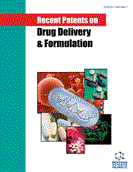Abstract
Nanotechnology is having a profound impact in many scientific fields and it has become one of the most important and exciting discipline. Like all technological advances, nanotechnology has its own scientific basis with a broad interdisciplinary effect. Perhaps, we are witnessing an exponential growth of nanotechnology, reflection of this is the important increase in the number of patents, scientific papers and specialized “nano” meetings and journals. The impact in the pharmaceutical area is related to the use of colloidal drug delivery systems as carriers for bioactive agents, in particular, the nanoparticle technology. The term nanoparticles designates solid submicronic particles formed of acceptable materials (e.g. polymers, lipids, etc.) containing an active substance. It includes both nanospheres (matricial systems) and nanocapsules (membrane systems). The knowledge of the nanoparticle preparation methods is a key issue for the formulator involved with drug-delivery research and development. In general, the methods based on preformed polymers, in particular biodegradable polymers, are preferred due to their easy implementation and lower potential toxicity. One of the most widely used methods to prepare polymeric nanoparticles is emulsification-diffusion. This method has been discussed in some reviews that compile research works but has a small number of patents. In this review, the emulsificationdiffusion method is discussed from a technological point of view in order to show the operating conditions and formulation variables from data extracted of recent patents and experimental works. The main idea is to provide the reader with a general guide for formulators to make decisions about the usefulness of this method to develop specific nanoparticulate systems. The first part of this review provides an overview of the emulsification-diffusion method to prepare polymeric nanoparticles, while the second part evaluates the influence of preparative variables on the properties of the obtained particles relating the events to the formation mechanism. Novel innovations and applications of the method have also been compiled.
Keywords: Emulsion-diffusion method, formation mechanism, nanocapsules, nanoparticles, nanospheres, patents, preparative variables, polymers, SLN, dispersed monomers.
 17
17














